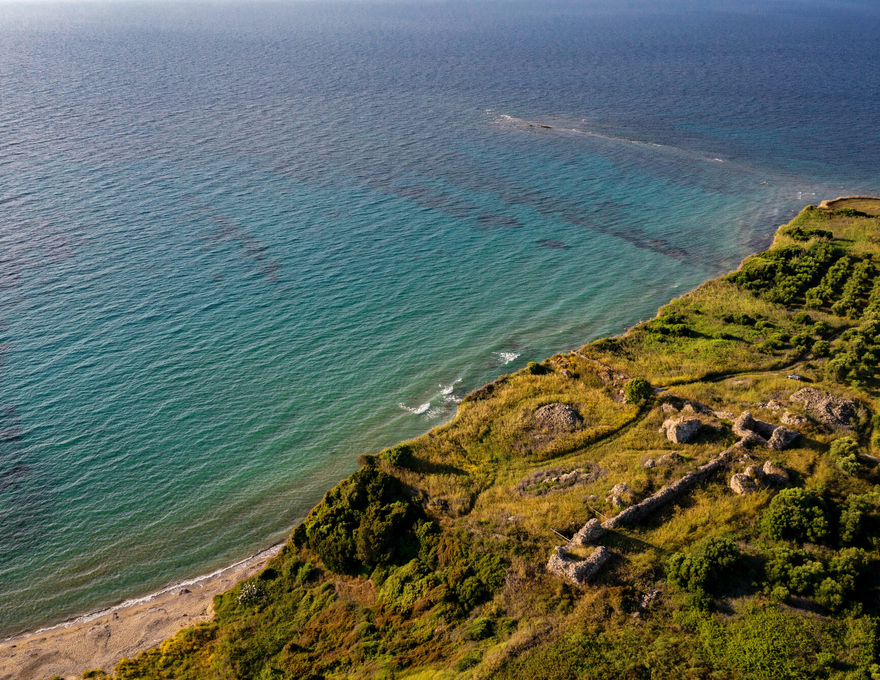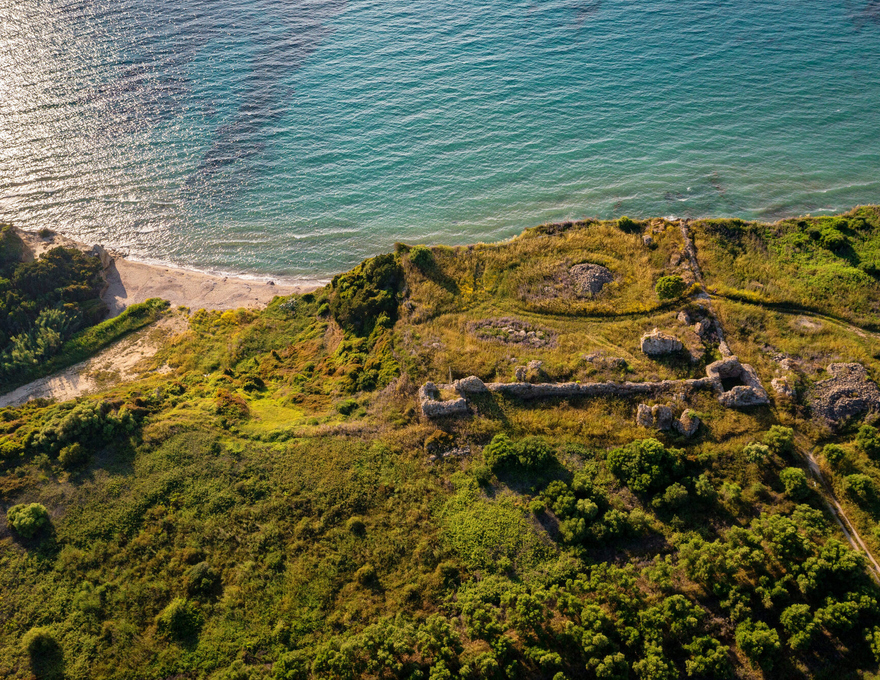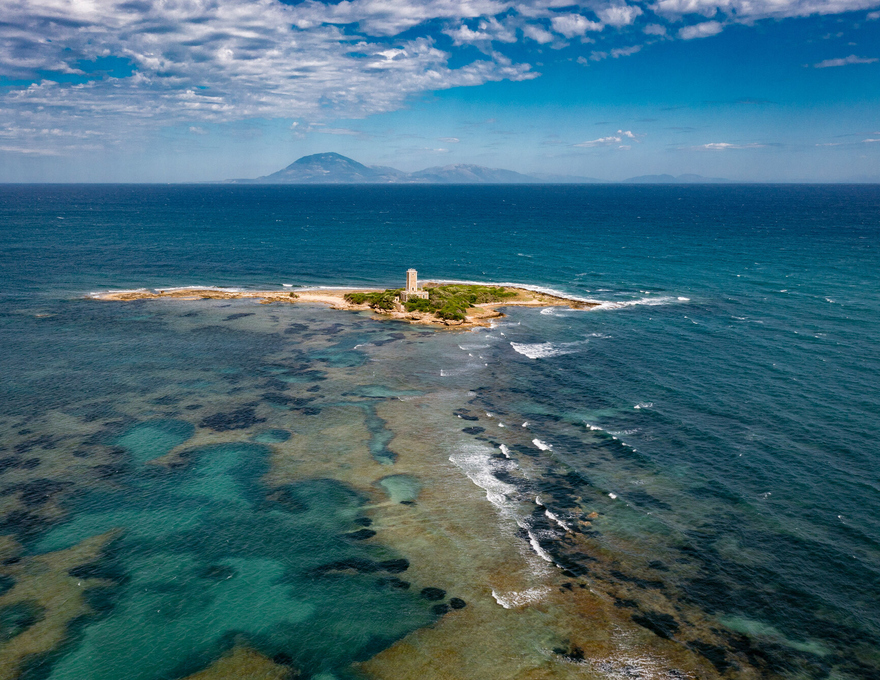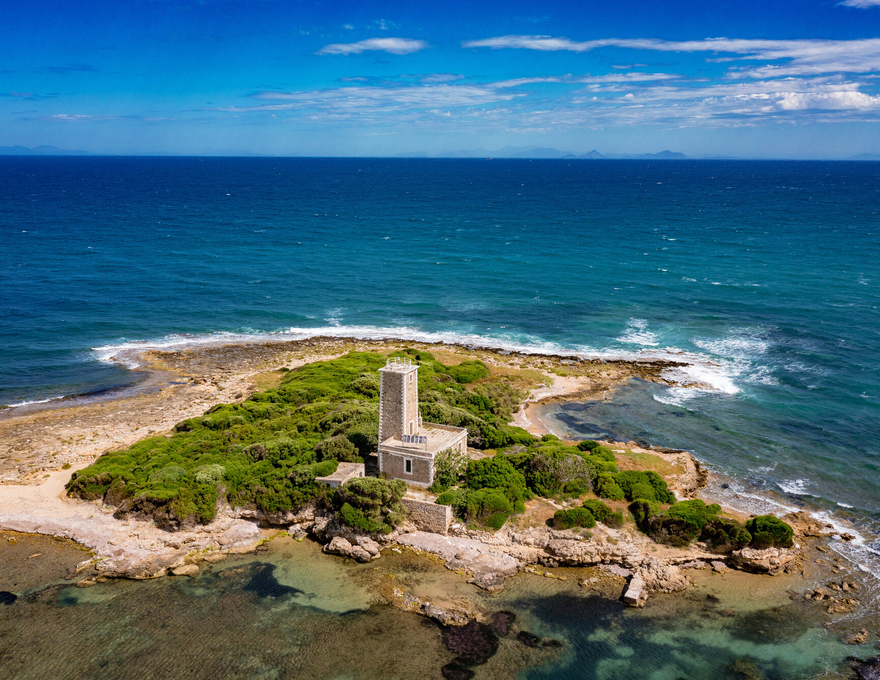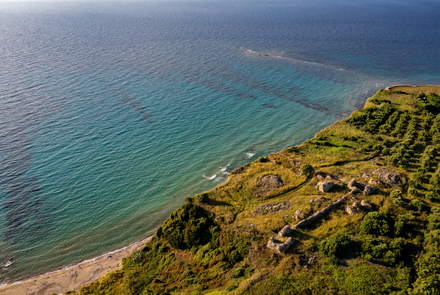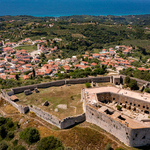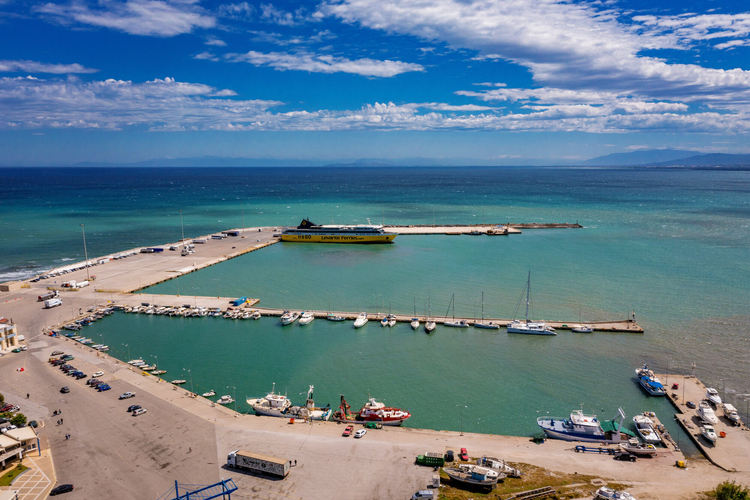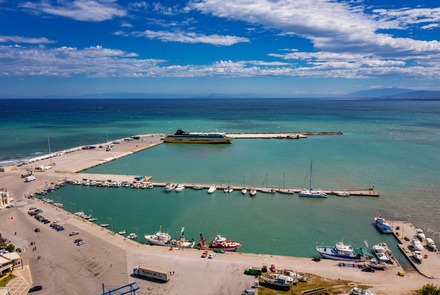Next to the small town of Kyllini and at a short distance from the modern port that connects the southern Ionian Islands with Ilia and the Peloponnese are the remains of Glarentza, the important medieval city and major port of the Principality of Achaia founded by the French Crusaders.
The archaeological site is located northwest of the present-day city of Kyllini, which in ancient times was the seaport of Elis, the capital of the state of the Eleans.
Ancient Kyllini flourished during Classical times, after the second synoecism of the capital Elis (Ilida) in 471 BC and functioned as the most important trading post and gateway to the land of Eleia. The strategically important ancient port, in addition to being an important trade station, was also a maritime transport node for the entire Mediterranean. In fact, every four years, ships with goods and people from all regions of the Greek world arrived in Kyllini to take part in the unique experience of the Olympic Games.
The ancient port of Kyllini was artificial, with an inner excavated section and piers, while ancient Kyllini, which was a medium-sized settlement, had sanctuaries of Asclepius and Aphrodite, whereas Pausanias attests also to a statue of Hermes as a phallus on a pedestal, to which the locals paid their respects.
During the Roman era, the city and the port continued to exist, however information and mentions of the area are now minimal. The ancient city and port of Kyllini slowly faded away in the following centuries.
The region appears again in the Middle Ages, around the 13th c. The ruler William II Villehardouin, in the mid-1250s, founded Glarentza (Clarentia, Clarence), on the remains of ancient Kyllini, as the port of Andravida, capital of the Principality of Achaia.
A city originally created by the Franks, Glarentza grew, flourished, declined, and disappeared over the course of two centuries. The area is rapidly developing into the most important economic and urban center of the crusader hegemony, while at the same time it is turning into one of the busiest ports in the Mediterranean as imports and exports of products take place from there. The city still had industrial activity, a hospital, banks and buildings for the service of seafarers, churches, blacksmiths, workshops, warehouses as well as a mint that cut the famous tornesi, also known as denier tournois. The importance of the city is also shown by the fact that the meetings of the rulers took place in Glarentza, while the prince maintains a second residence there.
However, from the 15th c. and in the years to follow, the security and tranquility of Glarentza are shaken by the raids of various enemies, trade is relocated to other ports, and the city declines and is abandoned. In World War II, German troops blow up the remaining walls and the remains of the city are destroyed. It even seems that the medieval city functioned as a quarry and a place to receive building material for the construction of the buildings of modern Kyllini.
There are no remains of the circuit wall, which was probably destroyed already in the Middle Ages, but visitors can perceive its position. Externally, the circuit wall was strengthened with a wide and deep moat, while at key points, for example at the corners and gates, the foundations of towers were found.
On the eastern side of the city, the cathedral of Saint Francis, built in the 13th century, is preserved, where during the city's heyday important events concerning the local public and political life took place, while at the same time it was also used as a cemetery for the nobles.
We know that the walls had three gates, two of which have been identified where road arteries ended, one of which led to the capital Andravida, and the other to the Chlemoutsi Castle. At the most fortified part of the city, on the west coast, there is located a circuit wall delimiting a small fortress, probably the princely residence. Two other buildings whose use has not been ascertained were found near the northern side.
A lighthouse was built in 1906 on the rocky island of Kafkalida, at a short distance from the opposite beach with which it communicated in ancient times, for the needs of navigation. The building, made of stonework and some elements of reinforced concrete, includes the lighthouse keeper's residence and is both a technical and historical example of communication and navigation in the past. The rocky island is of archaeological interest as an ancient cemetery has been preserved and excavations have been carried out to a limited extent from time to time by the competent Ephorate of Antiquities of Ilia.
Copyediting: Ephorate of Antiquities of Ilia

